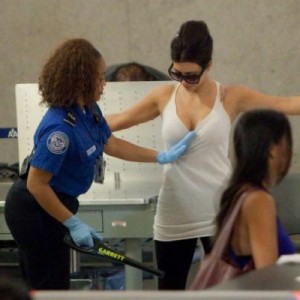
A while ago, we ran a post outlining how to get through airport security painlessly and without much of the usual hassle. We’re going to give it a page all on its on, that’s how important this really is.
Some research on our part has shown that passengers around the world have little idea as to what really goes on behind the scenes when they pass through security, in various states of distress and discomfort. Passengers, bloggers and newspapers around the world seem intent on taking the direction of criticism without facts, and complaint without restraint or improvement suggestions of any kind. Most recently, “Schneier on Security” had an opinion, and we commented, as you may see at the bottom of his page.
Anyway, there is little, as of yet, that we here can do about airport security measures in ways of improvement, so in the mean time we will try and make the process as comfortable as possible for those who have to endure it.
Airport security as it is today centers around a simple concept known as “security theatre“. This, condensed, means that in part it is a show, put on to deter would-be criminals from acting out their intentions. It also means that the measures put in place are not necessarily fool-proof, meant to detect all discrepancies or breach of code. Rather, they are there to show an intention of safety. However, how effective airport security is depends in part on the willingness of the law-abiding passenger to submit to the procedures set in place. If it becomes the norm to resist the procedures, or to make the checkpoint as difficult as possible, this will aid no one but the would be criminal trying to make his or her way through. Also, there have been cases where honest passengers have unknowingly been coaxed into bringing illegal items through the checkpoints.
The passenger flying from a normal European or US/North American airport will go through several stages before reaching the “red zone”, or secure / clean zone of the airport.
First, there is check-in, where ideally the passenger delivers his or her luggage, gets their boarding passes and their ID is checked against the ticket. As many will know, automatic or online check-in now makes this procedure easier to evade should one desire to do so.
Second, the passenger is screened through security, which will always envolve an x-ray screening machine, looking through any hand luggage intended to be brought into the aircraft’s cabin. Such an x-ray machine generates x-rays from a high-voltage coil in an oilbath, not from dangerous radioactive materials. The x-rays are therefore very weak, and cannot harm you, your belongings or anything else around it. (One of the most frequent questions about these devices is whether it will damage photographic film – the answer is no. Any film with an ISO number of 6400 or lower will be left unharmed).
Third, the passenger will pass through a metal detecting portal, making sure that there are no weapons concealed on the body of the passenger. These portals are non-active portals, making them able to detect metal without any danger of influencing devices inside the passenger’s body such as pacemakers or implants of other kinds.
The fourth and last step in the procedures will be a manual check of either the passenger, his or her hand luggage, or both. When it comes to the passenger, this will mean a manual “pat-down” of the person, and the use of a hand-held metal detector, casually referred to as a “wand” (especially in the US). When cleared by the security officer, the passenger is allowed to pass the security checkpoint and into the airport’s red/clean zone and board their aircraft.
Should a manual check of the hand luggage be required, this will normally be done in a more private spot, with full confidentiality on the security officer’s part, unless there are illegal items discovered.
We would strongly recommend that anyone interested in airport security take a look at our previous blog post on how to behave in such checkpoints in order to ensure a more pleasant experience, and a quicker pass-through to the red zone. The post is here.

1 thought on “Airport Security, a Short and Concise Guide”
Comments are closed.